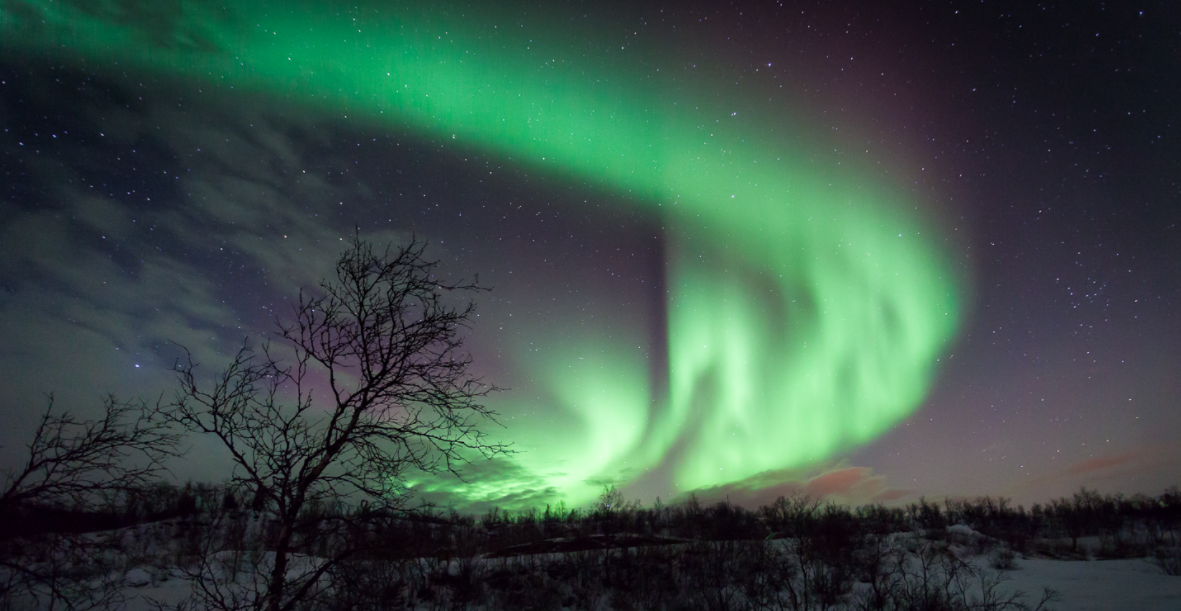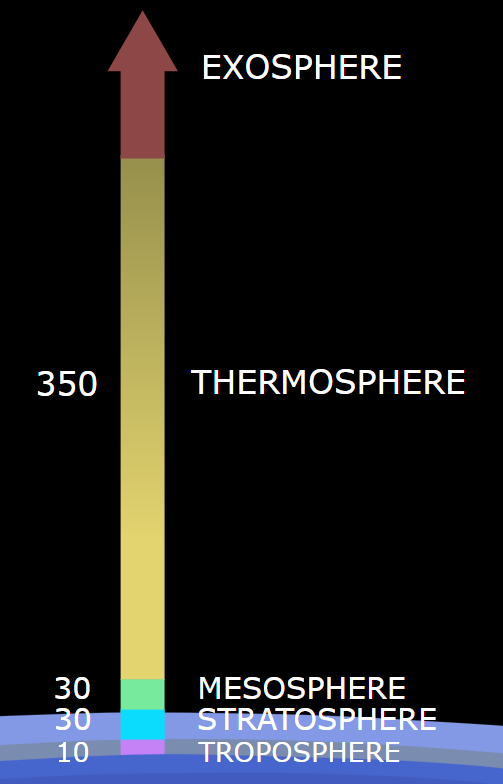
Which layer of atmosphere is responsible for Aurora Borealis?
A) troposphere
B) thermosphere
C) ionosphere
D) exosphere
Answer
466.5k+ views
Hint: An atmosphere is a layer (or layers) of gas that surrounds a planet and is kept in place by the planetary body's gravity. When the gravity is high and the temperature of the atmosphere is low, a planet keeps its atmosphere. The outer portion of a star, which includes the layers above the opaque photosphere, is known as the stellar atmosphere; low-temperature stars may have outer atmospheres containing complex molecules.
Complete answer:
Auroras are bright light patterns that look as curtains, beams, spirals, or dynamic flickers that span the whole sky.
Auroras are generated by solar wind-induced disruptions in the magnetosphere. The paths of charged particles in the magnetospheric plasma are altered by these disruptions. Electrons and protons, in particular, precipitate in the high atmosphere (thermosphere/exosphere). As a consequence of the ionisation and excitation of atmospheric components, light of various colours and complexity is produced.
The following image showing aurora borealis:

The amount of acceleration given to the precipitating particles determines the shape of the aurora, which occurs in bands around both polar regions.
The thermosphere is a layer of the atmosphere that surrounds the Earth. Above the mesosphere and below the exosphere lies the thermosphere. It stretches from around 90 kilometres (56 miles) above our globe to between 500 and 1,000 kilometres (311 to 621 miles).
The layers of earth can be seen below:

Temperatures rise significantly in the lower thermosphere (below 200 to 300 km altitude), then level off and remain rather constant when altitude rises above that level. The thermosphere's temperature is greatly influenced by solar activity.
Finally, the thermosphere is where the aurora (Southern and Northern Lights) occur. At high latitudes, charged particles from space clash with atoms and molecules in the thermosphere, causing them to be excited into higher energy levels. These atoms and molecules release their surplus energy by producing light photons, which we perceive as vivid auroral displays.
Hence, option (B) is correct.
Note:
The Earth's atmosphere, like the oceans, contains waves and tides. These waves and tides aid in the transportation of energy throughout the atmosphere, including the thermosphere. Winds and the thermosphere's general circulation are significantly influenced by these tides and waves. In some areas of the thermosphere, moving ions are pulled along by collisions with electrically neutral gases, resulting in strong electrical currents.
Complete answer:
Auroras are bright light patterns that look as curtains, beams, spirals, or dynamic flickers that span the whole sky.
Auroras are generated by solar wind-induced disruptions in the magnetosphere. The paths of charged particles in the magnetospheric plasma are altered by these disruptions. Electrons and protons, in particular, precipitate in the high atmosphere (thermosphere/exosphere). As a consequence of the ionisation and excitation of atmospheric components, light of various colours and complexity is produced.
The following image showing aurora borealis:

The amount of acceleration given to the precipitating particles determines the shape of the aurora, which occurs in bands around both polar regions.
The thermosphere is a layer of the atmosphere that surrounds the Earth. Above the mesosphere and below the exosphere lies the thermosphere. It stretches from around 90 kilometres (56 miles) above our globe to between 500 and 1,000 kilometres (311 to 621 miles).
The layers of earth can be seen below:

Temperatures rise significantly in the lower thermosphere (below 200 to 300 km altitude), then level off and remain rather constant when altitude rises above that level. The thermosphere's temperature is greatly influenced by solar activity.
Finally, the thermosphere is where the aurora (Southern and Northern Lights) occur. At high latitudes, charged particles from space clash with atoms and molecules in the thermosphere, causing them to be excited into higher energy levels. These atoms and molecules release their surplus energy by producing light photons, which we perceive as vivid auroral displays.
Hence, option (B) is correct.
Note:
The Earth's atmosphere, like the oceans, contains waves and tides. These waves and tides aid in the transportation of energy throughout the atmosphere, including the thermosphere. Winds and the thermosphere's general circulation are significantly influenced by these tides and waves. In some areas of the thermosphere, moving ions are pulled along by collisions with electrically neutral gases, resulting in strong electrical currents.
Recently Updated Pages
Why are manures considered better than fertilizers class 11 biology CBSE

Find the coordinates of the midpoint of the line segment class 11 maths CBSE

Distinguish between static friction limiting friction class 11 physics CBSE

The Chairman of the constituent Assembly was A Jawaharlal class 11 social science CBSE

The first National Commission on Labour NCL submitted class 11 social science CBSE

Number of all subshell of n + l 7 is A 4 B 5 C 6 D class 11 chemistry CBSE

Trending doubts
What is meant by exothermic and endothermic reactions class 11 chemistry CBSE

10 examples of friction in our daily life

One Metric ton is equal to kg A 10000 B 1000 C 100 class 11 physics CBSE

1 Quintal is equal to a 110 kg b 10 kg c 100kg d 1000 class 11 physics CBSE

Difference Between Prokaryotic Cells and Eukaryotic Cells

What are Quantum numbers Explain the quantum number class 11 chemistry CBSE




